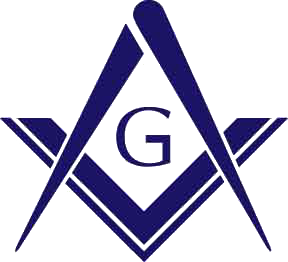— “Goose and Gridiron Ale-House and the Four Original Lodges” by Brother Ralph Omholt
The Goose and Gridiron Ale-House was located in a section of London known as St. Paul’s Churchyard. The name was a corruption, or parody, on the arms of the “Swan and Lyre,” a musical society which also met at the ale-house. The building was constructed with five floors, including the basement. The largest dining room, on the second floor, measured only 14 2 by 21 2 feet in area.
Masonic history records the beginning of the Grand Lodge of London and Westminster as being organized there on June 24, 1717, by a combined meeting of four local area Lodges. One of Lodges among the original ‘Four Old Lodges’ met there, assuming the name of the ale-house.
Dr. Anderson tells us that a Grand Lodge ‘pro tempore’ was formed at the Apple Tree Tavern in 1716, with no Grand Master elected and with no regulations or laws of any kind formulated. This meeting amounted to an agreement to meet the following June 24th to form a Grand Lodge, at the Goose and Gridiron Alehouse.
The famous meeting of June 24, 1717 (birthday of St. John the Baptist) was the designated as the Annual Assembly and Feast. Three additional annual meetings were subsequently specified by the original General Regulations; one on Michaelmas (in September), one just after Christmas (December 27 – birthday of St. John the Evangelist), and another on Lady Day (Annunciation Day, March 25). There is no record that these specified meetings actually occurred.
At the organizational meeting, the four Lodges elected Anthony Sayer, as the ‘oldest Master Mason and then Master of a Lodge’, as its Grand Master, agreeing to hold a ‘Grand Feast’ once a year. Sayer appointed his Grand Wardens and ‘commanded the Master and Wardens of Lodges to meet the Grand Officers every Quarter in Communication.’ It is worthy to note that the organization started, with only those two purposes. The modern “Craft” started with a planned party! The four original Lodges which effected the formation of the Premier Grand Lodge are referred to as ‘The Four Old Lodges.’ They were known by the names of the taverns or ale houses where they met. The distinction between ale-houses and taverns, if there was any, is probably inconsequential.
Dr. Anderson lists the ‘Four Old Lodges’ as:
- At the Goose and Gridiron Ale-house in St. Paul’s Churchyard.
- At the Crown Ale-house in Parker’s Lane near Drury Lane.
- At the Apple-Tree Tavern in Charles Street, Covent Garden.
At the Rummer and Grapes Tavern in Channel Row, Westminster.
The original List of Lodges, published in 1725, displayed a pictorial representation of the name or sign of the tavern or ale house where each of the lodges met, in addition to the appropriate names of the locations or the streets and the meeting nights. The first on the list was represented by a picture of a Goose and Gridiron, opposite of which were the words, “St. Paul’s Churchyard, every other Mond from ye 29th of April inclusive.”
Coil’s Encyclopedia informs us that the lodge which originally met at the Goose and Gridiron Ale house in 1717 continued to meet at that location until 1729. It then moved to the King’s (or Queen’s) Arms Tavern in the same area of London, where it remained for an extended period of time. On the Engraved List of Lodges of 1760, it assumed the name, “West Indian and American Lodge.” In 1770, this name was changed to the “Lodge of Antiquity.”
In the 1770s, William Preston (‘father’ of the Masonic Monitor), Masonic writer and ritualist, was elected its Master, giving the Lodge renewed esteem and dignity. Later, the Duke of Sussex and the Duke of Albany each became Master of the Lodge for several years. While the name has been changed, the descended Lodge is still active. It currently meets at the Freemason’s tavern and the Freemason’s Hall in London
While the ale-house was torn down, the physical symbol of the goose was retained in the Masonic archives. Despite a variety of drawings which depicted it’s image with reasonable accuracy, the archivists were surprised to discover that the goose was actually standing in a crown. The original symbol has recently been restored
In the interest of justice, the history of the remaining three Lodges is also warranted
To be continued!


